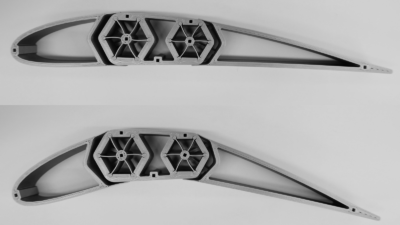Launch industry sees a defining year for interceptors, hypersonic boosters and space orbiters
By Clyde E. Carr Jr. and Joseph Majdalani|December 2021
The Solid Rockets Technical Committee studies techniques applied to the design, testing and modeling of rocket motors based on solid propellant grains.
Overall, this year thrived with high-speed interceptor missile tests, hypersonic booster demonstrations and satellite launchers. In the tactical-rocket category, the U.S. Navy and Air Force awarded Lockheed Martin two substantial contracts to produce scores of AGM-158C Long Range Anti-Ship Missiles. Lockheed Martin announced that from March into May it conducted tests of the Extended-Range Guided Multiple Launch Rocket System at White Sands Missile Range in New Mexico. These demonstrations confirmed the missile’s enhanced range, trajectory and robust interfacing with its launcher. Lockheed Martin also used the same launcher in May to launch a surface-to-surface Precision Strike Missile weapon demonstrator. Meanwhile, Northrop Grumman announced that the Navy in July completed a live fire test of the company’s newly upgraded Advanced Anti-Radiation Guided-Missile-Extended Range, when an F/A-18E/F Super Hornet fired the air-to-surface missile.
In related news, the Missile Defense Agency this year announced its selection of Northrop Grumman, Raytheon and Lockheed Martin as the main contractors for development of the nation’s next-generation interceptor. From May to July, the agency conducted two live interceptor tests involving six Standard Missile-6 solid-boosted rockets. The U.S. Army took delivery from Aerojet Rocketdyne of its 1,000th Patriot Advanced Capability-3 Missile Segment Enhancement booster with hit-to-kill capability. Then, in April, Lockheed Martin said it supplied Sweden’s first package of PAC-3-MSEs. In the interim, Lockheed Martin conducted two PAC-3-MSE flight tests at White Sands; both missiles intercepted the incoming target using hit-to-kill technology.
In the strategic and hypersonic rocket categories, the Navy’s Strategic Systems Program said that in February it conducted a UGM-133A Trident II flight test from a nuclear-powered submarine. This marked at least 165 launches for Trident II since 1989. In May, Lockheed Martin announced it tested a hypersonic strike system first-stage booster in Utah. Also in May, Aerojet Rocketdyne said it demonstrated the effectiveness of DARPA’s Operational Fires technology that enables a missile to adjust its speed “on the fly.” This static test included a medium-range, ground-based, hypersonic weapon that relied on a second-stage throttleable motor. Further, the Navy completed its evaluation of both first- and second-stage motors in Utah, first in May and later in August, as part of its ongoing development of a Conventional Prompt Strike hypersonic offensive capability in concert with the Army’s. Both programs enable long-range service-specific weapon delivery with hypersonic boost-glide capability from ships, submarines and mobile launchers.
During a January static test, United Launch Alliance’s Vulcan Centaur’s strap-on GEM-63XL boosters delivered 2,000 kilonewtons (449,000 pounds) of thrust, the company said. In April, ULA’s Delta IV Heavy launched from Vandenberg Space Force Base in California and placed the NROL-82 satellite into orbit. In May, ULA said its Atlas V rocket lifted off from Florida with the Space Based Infrared System Geosynchronous Earth Orbit Flight 5 spacecraft for the U.S. Space Force. This marked Atlas’s 87th launch using Aerojet Rocketdyne and Northrop Grumman strap-on and separation boosters.
In March, NASA selected a two-stage solid booster and spin-up/spin-down motor system for the Mars Ascent Vehicle. In June, Northrop Grumman said it completed the 28th Minotaur I launch for national reconnaissance using a decommissioned Minuteman III. In addition, Northrop Grumman launched the Tactically Responsive Launch 1 into orbit using a three-stage Pegasus XL.
On the international stage, in April Arianespace said it launched its 18th Vega rocket from the Guiana Space Center in French Guiana to deploy the Pléiades Neo 3 Earth Observation constellation, along with numerous light satellites. This was followed by the 19th Vega launch in August, which orbited Pléiades Neo 4 and four innovative cubesats. Furthermore, an Ariane 5 in July placed two telecommunications satellites into orbit for Embratel and Eutelsat. In September, South Korea fired a submarine-launched ballistic missile from a submarine. In February, an Indian Polar Satellite Launch Vehicle orbited Brazil’s geosynchronous Amazônia-1 and 18 smaller payloads. This rocket, equipped with two solid strap-on boosters, lifted off from the Satish-Dhawan Space Center in Sriharikota, India. An identical launch in September inserted the Earth-observation satellite RISAT-1A into orbit.
Contributor: Wesley J. Ryan



































